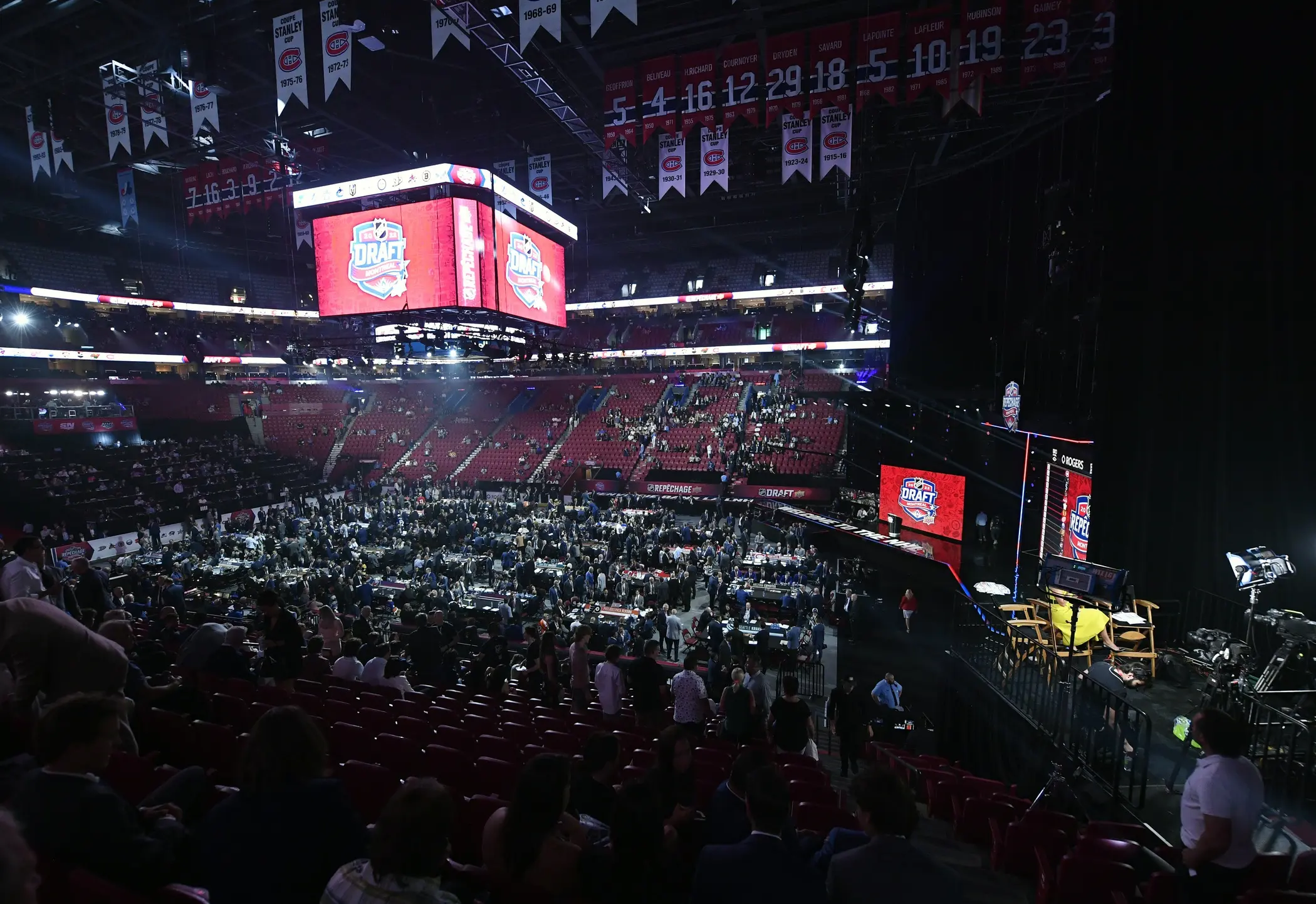Nation Sites
The Nation Network
FlamesNation has no direct affiliation to the Calgary Flames, Calgary Sports and Entertainment, NHL, or NHLPA
What’s the ideal number of draft choices in a single NHL Draft?

Photo credit: Eric Bolte-USA TODAY Sports
Friends, there’s a reasonable probability that in the near future the Calgary Flames will start aggressively adding young players and draft choices at the cost of some of their established players. You can call this whatever you want: a rebuild, a retool, and youthening. Whatever you want to label it, the success or failure of the endeavour will be determined by how effective the club with their drafting and development.
Over the summer, Flames general manager Craig Conroy posed a question that was given to him by special assistant Jarome Iginla: What’s the right number of picks in a single draft class? (Is there such thing as too many draft picks?)
So here’s the thing: the general playbook for kicking off a youth phase involves selling off pending free agents (or other veteran players) and loading up on draft selections. But draft selections can be used to select prospects, or they can be used as trade chips. The Flames balanced both approaches pretty well at the 2015 NHL Draft, using picks to (a) acquire Dougie Hamilton and (b) draft three regular players in the form of Rasmus Andersson, Oliver Kylington and Andrew Mangiapane.
You can’t trade away all of your draft choices: in the current NHL landscape, with a cap system, teams need the flexibility provided by players on entry-level deals becoming contributors early on. But you also can’t make 20 picks in a single draft: there’s no way a farm system can accommodate more than a certain amount of first-year pros per year, and beyond a certain point teams are using picks that they probably would have been better off trading.
So what’s the right number of draft picks per year? It depends on how successful your hockey club is at drafting.
Let’s look at the 2011-20 period, broken down by round. (This table lists the number of picks, followed by how many signed entry-level contracts (ELCs) with the Flames, how many played 1+ NHL games with the club, and how many reached 200+ NHL games with the club.)
Round | Picks | ELCs | 1+ games | 200+ games |
1 | 10 | 10 | 10 | 4 |
2 | 10 | 10 | 6 | 2 |
3 | 7 | 4 | 1 | 0 |
4 | 9 | 4 | 4 | 1 |
5 | 7 | 0 | 0 | 0 |
6 | 10 | 5 | 2 | 1 |
7 | 10 | 7 | 2 | 0 |
In the first two rounds of the draft, every single player the Flames selected – all 20 – signed entry-level deals. 16 of the 20 played NHL games. These players generally spend less time than others in their farm system, because they’re more complete and polished players than those selected later, but they often spend some time there.
After the second round, the Flames have turned 40% of their draft choices into players that spent time in their farm system. And 9 of those 43 players played at least one NHL game.
Now, the other question is how any players the Flames can integrate into the Wranglers each season. This season, for example, the Flames have Matt Coronato, William Stromgren and Lucas Ciona as first-year North American pros, while Ilya Nikolaev and Rory Kerins are full-time AHLers after spending last season in the ECHL.
Logistically, a team can probably accommodate a goaltender (if they have a good tandem partner to help them along), a defender or two, and probably two or three forwards. Again, the effectiveness of a team to bring youngsters in the farm system depends on the capabilities of their coaching staff and the qualities of the veteran players they have in their locker room. Let’s ballpark the number of players that they can bring along as four or five per season.
(An aside: NHL clubs have specific timeframes in which to sign their draft picks, which vary depending on which league they’re selected from. Canadian junior players must be signed within two years, non-Russian Europeans within four years, and collegiate players by the August following their completion of school. It’s tough to project the composition of each draft class, but generally we’re assuming that the mix of junior players and European/college players would off-set each other and wouldn’t overly complicate the timelines we discuss here.)
So with the way the Flames have drafted over the 2011-20 period, you’re thinking they’ll probably hit on every first or second-round pick – with an occasional whiff. To get two players for their farm system, they need to make two (and occasionally three) selections. To get two or three more players beyond the second round, they’ll need to make another six picks.
In short, the exact number of picks to keep probably depends on when during each draft the picks fall, but you’re probably looking at around eight picks per draft to keep the farm system appropriately stocked with new players. If a team has more than two picks in the first couple rounds, they might be able to get away with seven; the fewer early picks a team has, the more they’re reliant on late picks and need to make more of them. (It’s also worth noting that the fewer draft picks a team makes, the more reliant they are on recruiting college and European free agents, who often enter farm systems as more mature than drafted players but tend to have lower developmental ceilings.)
So as the Flames embark upon what could be a very eventful, interesting next few months, keep an eye on the number of picks they acquire (and how many they ultimately hold ont0 in each class).
BRING ON THE TEAM SPIRIT! Unleash your inner MVP with the game-changing Varsity Collection from Nation Gear! Embrace the winning spirit by repping your fave team with pride! Shop the Varsity Collection and more at nationgear.ca

Breaking News
- NHL Notebook: Oilers make a flurry of moves
- A Flame From the Past: Bob Boughner
- Flames roster moves: Jake Bean to IR, Dryden Hunt returns, Zayne Parekh to World Juniors
- University student Cole Savage was an injury away from playing goal for the Calgary Wranglers
- Wranglers Recap: Scoring frenzy ends in 7-4 loss to the Firebirds
